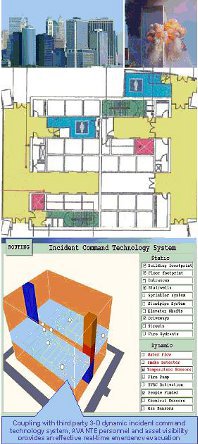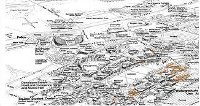Meeting the Challenges with a Practical Personnel and Asset Visibility Requirements
The following are the challenges of any personnel visibility and asset visibility system:
The ability to locate thousands of individuals within a campus-like environment such as University, Corporation or Government establishment, both inside and outside of buildings, without violating the individual privacy.
- Most RFID based personnel and asset visibility systems are nodal based systems capable of locating personnel only within two or more nodal stations.
- The granularity of data is limited to the locations of the nodes of the monitoring station.
- If a real-time locating beaconing approach is taken, a costly infrastructure must be put in place. To provide adequate battery life, the tags are typically at least ¼” thick and not easily used as normal ID badges.
- WiFi based tags tend to burn too much battery power to provide read intevals longer than a minute.
- There is a huge privacy concern when personnel are involved. Constant monitoring invades privacy and is generally not acceptable for civilian or even governmental applications.
- Cellular phones with GPS are potentially good devices for locating an individual when they wish to be located.
- But GPS only worsk well outside of buildings in open space.
- GPS is not effective inside a building or even inside an automobile.
Both traditional RFID including WiFi network and cellular phone systems lack the capability to alert individuals, groups of individuals in special areas, or the whole population within a campus in case of emergency.
- Alerting a group of individuals required the a priori knowledge of all of their “IP addresses.”
- IP addresses do not guarantee the real-time location of individuals.
- Even if a cellular number is known, contacting thousands of people via cell phone is not reliable and can potentially overload cellular signals resulting in dropped calls.
- Even then, it is a challenge to provide such notification when thousands of individuals need to be alerted, in case of cellular phone system.
- Most of RFID based real-time locating systems use beaconing mode and lack a mechanism to provide either visual or audio alerts to bearers of such tags.
- This fact remains a challenge even when proper infrastructures for monitoring networks are put in place.
The use of real-time locating solution must not infringe on personal privacy.
- This is a pre-requisite for any real-time locating system.
- Part of the privacy requirement includes the inclusion of role-based access control on any data gathered using such system.
- The visibility of personnel beyond the conventional nodal based information must be either “authorized” such as initiated by the person that is requesting emergency assistance or in true safety emergencies under the guidance of public laws and preferably with law enforcement participation.
- This requirement basically precludes “always-on” mode of real-time locating whenever personnel is involved. Thus, beaconing at high power that enables such “always-on” mode of operation should not be used.
- Similar to a cellular phone with GPS, the locating is only activated by the user or when a law enforcement agency has obtained similar authorization based on need only.



